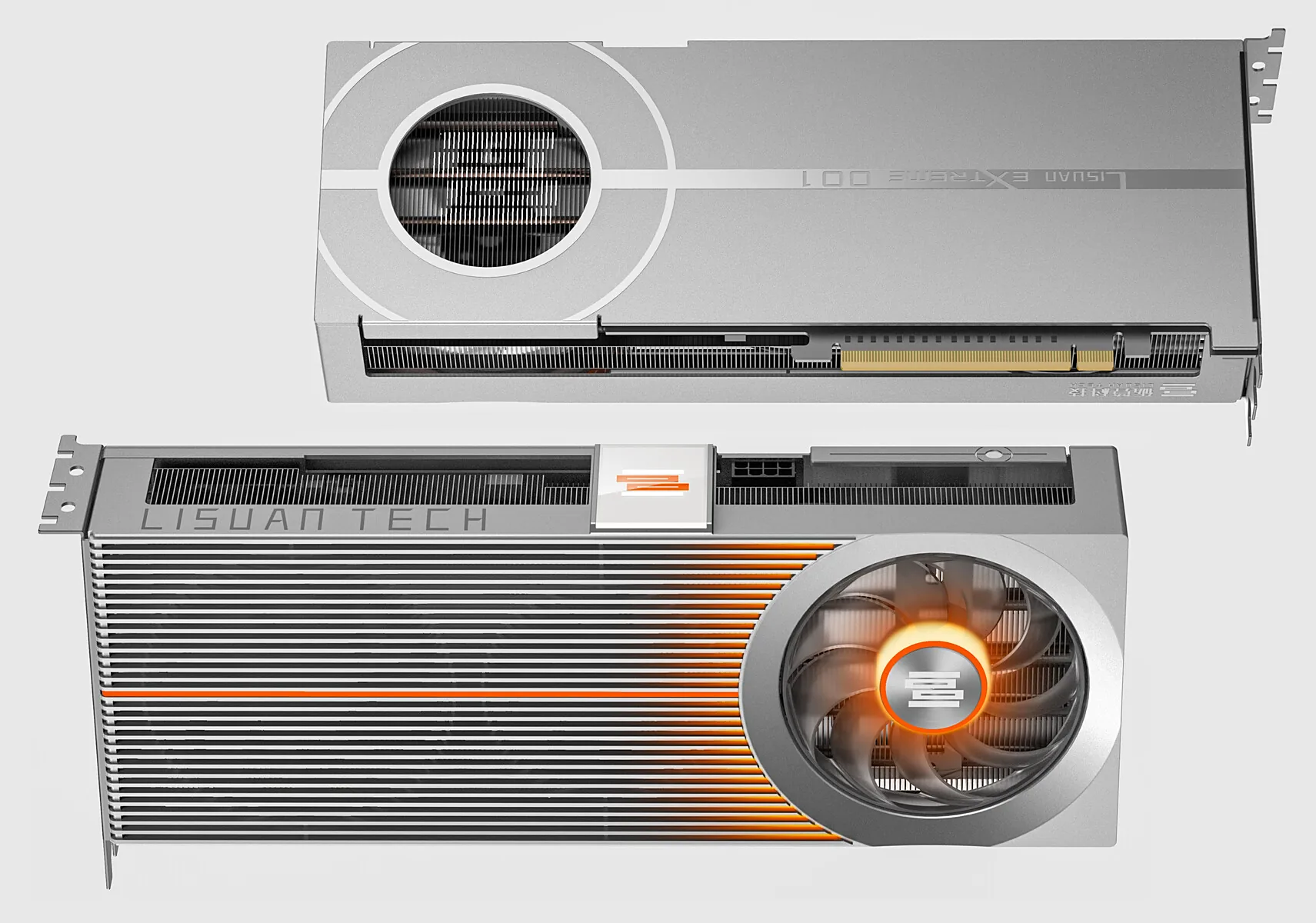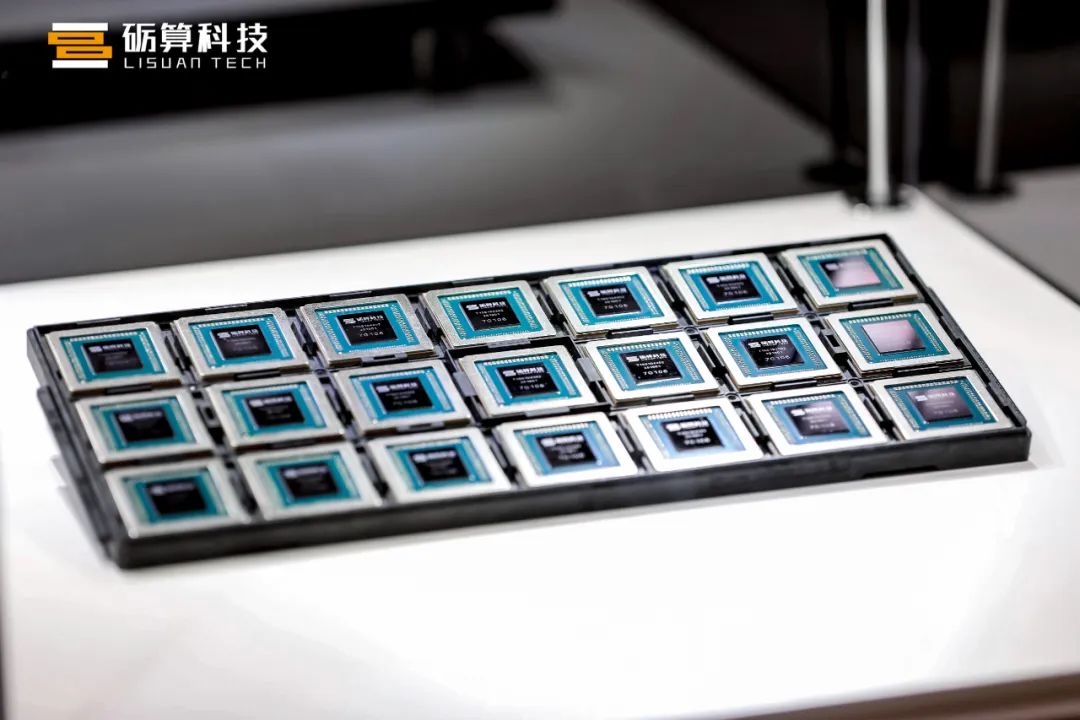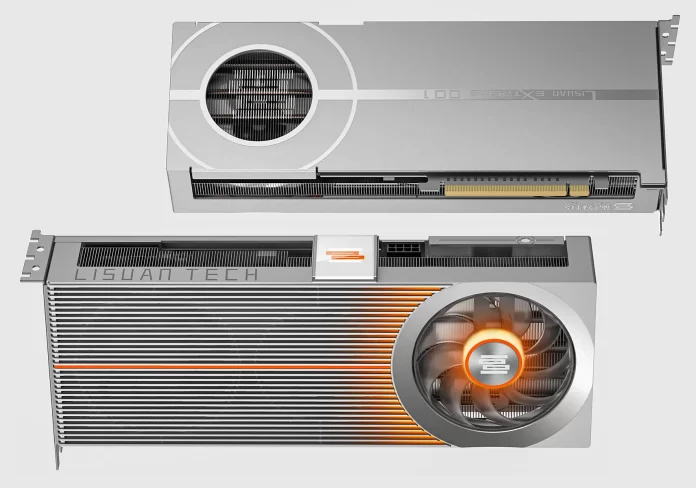
As ITHome reported, China is pushing its domestic GPU efforts into uncharted territory with Lisuan Tech’s first consumer and professional graphics cards, the 7G106 and 7G105.
Built on TSMC’s 6nm N6 process, the 7G106 and 7G105 are powered by the company’s in-house TrueGPU architecture and aim to compete directly with mid-range offerings from Nvidia and AMD. While the spotlight is on gaming performance, Lisuan is positioning these chips as multi-purpose accelerators for AI, cloud rendering, and even metaverse applications.
The consumer-focused 7G106 features 12 GB of GDDR6 memory on a 192-bit bus, 192 texture units, 96 ROPs, and an FP32 throughput of up to 24 TFLOP/s. It features four DisplayPort 1.4 outputs with DSC 1.2b compression and supports DirectX 12 (minus ray tracing), Vulkan 1.3, OpenGL 4.6, and OpenCL 3.0. Its single 8-pin PCIe connector also suggests a TDP of around 225W.
On the other hand, the professional 7G105 doubles memory to 24 GB with ECC, offering up to 192 GB/s of pixel fill rate, 384 GB/s of texture fill rate, and the same 24 TFLOP/s compute ceiling. Both cards include hardware-accelerated AV1 and HEVC decode up to 8K60 and encode capabilities at 8K30 for HEVC and 4K30 for AV1.
Lisuan 7G106 and 7G105 Specifications
Swipe to scroll horizontally
|
Specification |
Lisuan 7G106 (Gaming) |
Lisuan 7G105 (Professional/AI) |
|---|---|---|
|
GPU Architecture |
TrueGPU (G100) |
TrueGPU (G100) |
|
Process Node |
TSMC N6 (6nm DUV) |
TSMC N6 (6nm DUV) |
|
Compute Performance |
Up to 24 TFLOPs (FP32), INT8 support |
Up to 24 TFLOPs (FP32), INT8 support |
|
Texture Units (TMUs) |
192 |
192 |
|
Raster Units (ROPs) |
96 |
96 |
|
Memory |
12 GB GDDR6 |
24 GB GDDR6 (ECC) |
|
Memory Bus |
192-bit |
192-bit |
|
Memory Bandwidth |
TBD (depends on final clocks) |
TBD (depends on final clocks) |
|
Video Encode |
AV1 (4K @ 30 FPS), HEVC (8K @ 30 FPS) |
AV1 (4K @ 30 FPS), HEVC (8K @ 30 FPS) |
|
Video Decode |
AV1 & HEVC (up to 8K @ 60 FPS) |
AV1 & HEVC (up to 8K @ 60 FPS) |
|
API Support |
DirectX 12, Vulkan 1.3, OpenGL 4.6, OpenCL 3.0 |
DirectX 12, Vulkan 1.3, OpenGL 4.6, OpenCL 3.0 |
|
PCIe Interface |
PCIe 4.0 x16 |
PCIe 4.0 x16 |
|
Display Outputs |
4 × DisplayPort 1.4 (DSC 1.2b, up to 8K60) |
4 × DisplayPort 1.4 (DSC 1.2b, up to 8K60) |
|
Power Connector |
1 × 8-pin (225 W max implied) |
1 × 8-pin (225 W max implied) |
|
vGPU / SR-IOV Support |
Up to 16 virtual GPUs |
Up to 16 virtual GPUs |
What sets Lisuan apart from past Chinese GPU attempts is its claim of building the TrueGPU architecture from scratch, including the instruction set, compute core, and software stack. The company touts “intelligent multitasking” with up to 48 concurrent tasks, out-of-order triangle rendering for 50% faster efficiency in certain scenes, and dual FP32/INT32 instruction emission.
There’s also a unique matrix memory layout designed to boost memory efficiency by 40%, along with dynamic load balancing that distributes rendering and compute tasks across cores in real time. Lisuan even claims NRSS, a proprietary rendering quality optimization system designed to rival Nvidia DLSS and AMD FSR.
Benchmark results paint a mixed but promising picture. In synthetic tests, the 7G106 scored 26,800 points in 3DMark Fire Strike and 2,256 in Steel Nomad, putting it roughly on par with Nvidia’s RTX 4060 in Fire Strike. Geekbench 6 OpenCL saw it notch 111,290 points, edging out the RTX 4060 by around 10%.
Gaming demos were equally noteworthy: Black Myth: Wukong and Wuchang: Fallen Feathers both ran at over 70 FPS in 4K High settings, while Shadow of the Tomb Raider topped 80 FPS under similar conditions. High-profile titles like these running on a GPU architecture in its infancy paint a very positive picture for the platform’s stability, more so than raw performance numbers.

The 7G105 professional variant leans heavily on AI and enterprise markets, supporting SR-IOV virtualization with up to 16 containers. Lisuan highlights its applicability for cloud gaming, digital twins, virtual reality, and even robotics. The company claims its eXtreme series cards are ready to handle large AI models such as DeepSeek and Wenshengtu, extending their utility beyond traditional PC gaming.
Lisuan’s announcement marks a new phase for China’s domestic GPU ambitions. While past efforts, such as Zhaoxin’s integrated solutions and Moore Threads’ early discrete GPUs, struggled to break into the mainstream, Lisuan’s 6nm designs represent a bold attempt to close the gap with global players. If its claims of architectural independence and performance parity hold up under independent testing, this could be the first time a Chinese GPU maker truly competes with AMD and Nvidia in the discrete GPU space.
Mass production of the Lisuan 7G106 and 7G105 is expected to begin in September 2025, following sampling in August. Pricing and final clock speeds are yet to be announced. Still, Lisuan’s domestic-first strategy could make these cards a viable alternative for Chinese gamers and enterprises facing rising costs and export restrictions.
Follow Tom’s Hardware on Google News to get our up-to-date news, analysis, and reviews in your feeds. Make sure to click the Follow button.
